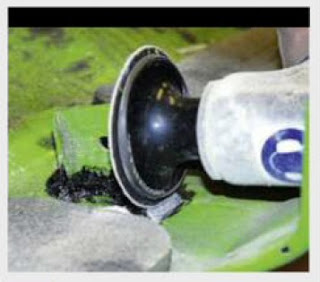Replacement plastic bodywork for early sportsbikes can be expensive and often unobtainable, so repair is usually the answer. You know the feeling. You’ve tracked down the bike of your dreams – the bike you longed to own in 1989.
It’s not a million miles away from being clean and tidy, looks to be a fairly straight-forward resto and even the price is sensible. Sure, the bodywork’s a bit tatty but hey, you should be able to pick up some better panels easily enough. Right? Last time, We just talked about Repair A Typical Split Plastics, Now we'll talk about building up a missing lug.Panel lugs are very prone to breakage, and even repeated removal and refitting can be enough to distress them. If you’ve got a side or fairing panel on which the fixing lug has broken off, it’s possible to ‘cast’ a new one using Topfix. It’s a very versatile product and using this is the next best thing to a welded repair in terms of strength and durability.
Tools For the Job : Some broken panels to practice on. Hot-air gun with welding attachment. Correct type plastic welding rods. Grinder. P36 disc. Solvent cleaner. Plastic adhesive. Flexible plastic filler. Plastic mesh. 120 sanding sheet. Stiff paper or card. Masking tape.
Cost : Materials – filler, filler rod, adhesive mesh and adhesive – can be up to £30. That’s less than paying a shop.
 |
| Spray both sides of the intended joint with solvent cleaner followed by primer. This will give a good key for the adhesive. |



